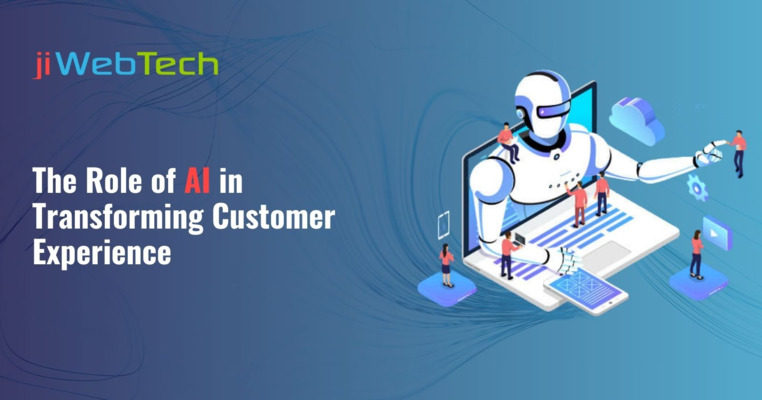- Nov 25, 2025
- Generative Ai
- 1798
Share this post on:

In the digital age, where nearly every facet of our lives is connected to the internet, the risk of cyber threats has never been higher. From individual privacy breaches to large-scale cyber-attacks targeting enterprises and governments, the stakes are immense. While traditional cybersecurity methods like firewalls, encryption, and intrusion detection systems (IDS) have provided essential protection, they are increasingly falling short in the face of rapidly evolving cyber threats. This is where Artificial Intelligence (AI)-based solutions are making a significant impact, transforming the cybersecurity landscape.
AI is no longer just a buzzword but a transformative force in many industries, including cybersecurity. With its ability to process vast amounts of data, learn from patterns, and make real-time decisions, AI is enhancing cybersecurity by improving threat detection, automating responses, and providing smarter protection strategies. This article explores how AI is revolutionizing cybersecurity and why it is indispensable in today’s threat landscape.
The Rise of Cybersecurity Threats
To understand the role of AI in cybersecurity, we first need to look at the nature of modern cyber threats. The digital world is home to an ever-growing array of malicious actors, ranging from hackers targeting individual consumers to well-organized cybercriminal organizations and nation-states engaging in cyber warfare.
Some common types of cyber threats include:
- Malware: Malicious software that can damage or disrupt systems, steal sensitive data, or hijack resources.
- Phishing Attacks: Deceptive attempts to obtain sensitive information by pretending to be a trustworthy entity.
- Ransomware: A type of malware that encrypts data and demands a ransom for decryption.
- Zero-Day Exploits: Attacks that take advantage of vulnerabilities in software that are unknown to the vendor.
- Insider Threats: Employees or contractors intentionally or unintentionally causing harm to an organization’s security
As cybercriminals grow more sophisticated and AI technologies themselves are leveraged to launch smarter attacks, the traditional methods of identifying and mitigating these threats have proven insufficient. This has led to the rise of AI-based solutions that can analyze, predict, and respond to cybersecurity risks in real-time.
How AI-Based Solutions Are Transforming Cybersecurity
AI’s ability to handle large amounts of data, identify patterns, and learn from them makes it an ideal tool for combating cyber threats. The integration of AI in cybersecurity has led to several key advancements in threat detection, incident response, and predictive analytics. Let’s delve into some of the key ways AI is enhancing cybersecurity:
1. Advanced Threat Detection
Traditional security systems often rely on pre-defined rules to detect known threats. However, this approach is limited because cybercriminals are constantly evolving their tactics to bypass these systems. AI-based systems, particularly those using machine learning (ML) and deep learning, can analyze enormous amounts of data and detect patterns that are indicative of cyber threats.
AI-based threat detection systems do not just rely on signature-based detection but also on behavior analysis. These systems can learn what constitutes "normal" behavior on a network or device and identify deviations from this baseline that may indicate malicious activity. For example, if an AI-based system detects an unusually high volume of data being transmitted from a specific device, it can flag this as a potential sign of data exfiltration or a botnet attack.
2. Predictive Threat Intelligence
Predictive analytics powered by AI is another game-changer in the realm of cybersecurity. By analyzing historical data and identifying emerging trends, AI can help predict potential future threats before they materialize. This allows organizations to take proactive measures and fortify their defenses before a full-scale attack occurs.
For example, AI can scan the dark web and other online sources for emerging threats, such as new malware strains, leaked credentials, or vulnerabilities in popular software. By identifying these threats early, organizations can patch vulnerabilities and strengthen their security posture.
Predictive threat intelligence also allows for more effective risk assessment, helping organizations prioritize their resources toward the most critical threats and vulnerabilities.
3. Automating Response to Cyber Incidents
One of the most valuable applications of AI in cybersecurity is automating responses to cyber incidents. Traditional response mechanisms rely heavily on human intervention, which can be slow and prone to error, especially in the face of fast-moving threats. AI-based solutions can significantly reduce response times by automatically taking predefined actions in the event of a security breach.
For example, an AI system might automatically isolate an infected device from the network if it detects ransomware activity. Similarly, if an AI-powered intrusion detection system identifies a suspicious login attempt, it might automatically lock the account and alert security teams to investigate further.
This automation helps minimize damage, reduces the workload on security teams, and enables a more efficient response to cyber incidents.
4. AI for Endpoint Security
Endpoint security involves protecting devices such as computers, smartphones, and IoT devices from cyber threats. With the proliferation of connected devices, ensuring endpoint security has become a critical priority for organizations. AI enhances endpoint security by continuously monitoring devices for signs of compromise and taking swift action when necessary.
AI algorithms can assess the behavior of processes running on an endpoint, flagging any activity that deviates from normal patterns. For instance, if an endpoint begins running unknown processes or communicating with suspicious external servers, an AI-based system can raise an alert and take actions to contain the threat, such as blocking the process or quarantining the device.
5. AI-Driven Phishing Detection
Phishing is one of the most common and effective forms of cyberattack. In phishing attacks, cybercriminals impersonate trusted entities like banks or email providers to trick victims into revealing sensitive information. AI is playing a pivotal role in enhancing phishing detection by analyzing patterns in emails and web content to identify potential phishing attempts.
Machine learning algorithms can be trained to detect telltale signs of phishing emails, such as unusual language patterns, mismatched URLs, or abnormal sender behavior. AI development solutions can flag suspicious emails and even block them from reaching users’ inboxes. Similarly, AI can analyze website content to determine if a site is likely to be a phishing site by comparing it to known phishing tactics.
6. Behavioral Biometrics for Authentication
Traditional authentication methods, such as passwords and even two-factor authentication, are increasingly being targeted by cybercriminals. AI-based behavioral biometrics is emerging as a more secure alternative for user authentication. This technology analyzes unique user behaviors, such as typing patterns, mouse movements, and touch gestures, to create a behavioral profile for each user.
Once a behavioral profile is established, AI algorithms can continuously monitor and verify that the person interacting with a system is indeed the legitimate user. If any deviations from the established behavior are detected, the system can flag the activity as suspicious, triggering additional verification measures.
Behavioral biometrics significantly enhance security by making it more difficult for cybercriminals to spoof or bypass authentication mechanisms.
7. AI for Vulnerability Management
AI can play a key role in vulnerability management by identifying and prioritizing security weaknesses in systems and software. Vulnerabilities are often discovered after a system is deployed, and traditional methods of patch management can be slow and inefficient. AI can accelerate this process by scanning for vulnerabilities in real time and recommending patches based on the severity of the risk.
AI can also help in identifying zero-day vulnerabilities—those that have not been previously discovered or patched—by analyzing code behavior and flagging abnormal activities. This is particularly valuable in preventing exploits of newly discovered vulnerabilities before they can be weaponized by attackers.
Challenges and Limitations of AI in Cybersecurity
While AI presents many opportunities for enhancing cybersecurity, it is not without its challenges and limitations. One of the primary concerns is the potential for adversarial AI. Just as AI can be used to defend against attacks, cybercriminals can also use AI to launch more sophisticated attacks. For instance, machine learning algorithms could be used to develop malware that can bypass AI-based detection systems.
Another challenge is the reliance on large datasets for training AI systems. High-quality data is crucial for AI’s effectiveness, but acquiring sufficient data that accurately reflects the ever-changing cybersecurity landscape can be difficult. Furthermore, implementing AI in cybersecurity requires significant resources, both in terms of technology and skilled personnel, making it an investment that not all organizations can afford.
Conclusion
AI-based solutions are undeniably transforming the field of cybersecurity. By providing enhanced threat detection, predictive analytics, automated responses, and smarter authentication methods, AI is equipping organizations to face the rapidly evolving landscape of cyber threats. However, as with any technology, it is important to understand both the potential and the limitations of AI in the context of cybersecurity. As the cybersecurity industry continues to evolve, AI will play an increasingly vital role in defending against cyberattacks.
jiWebTech offers cutting-edge cybersecurity solutions powered by AI, ensuring that organizations can proactively protect themselves against modern cyber threats. With its expertise and advanced technology, jiWebTech is helping businesses build resilient cybersecurity infrastructures that can adapt to the constantly changing threat landscape.
In the battle against cybercrime, AI is not just a tool; it is the future of cybersecurity.














